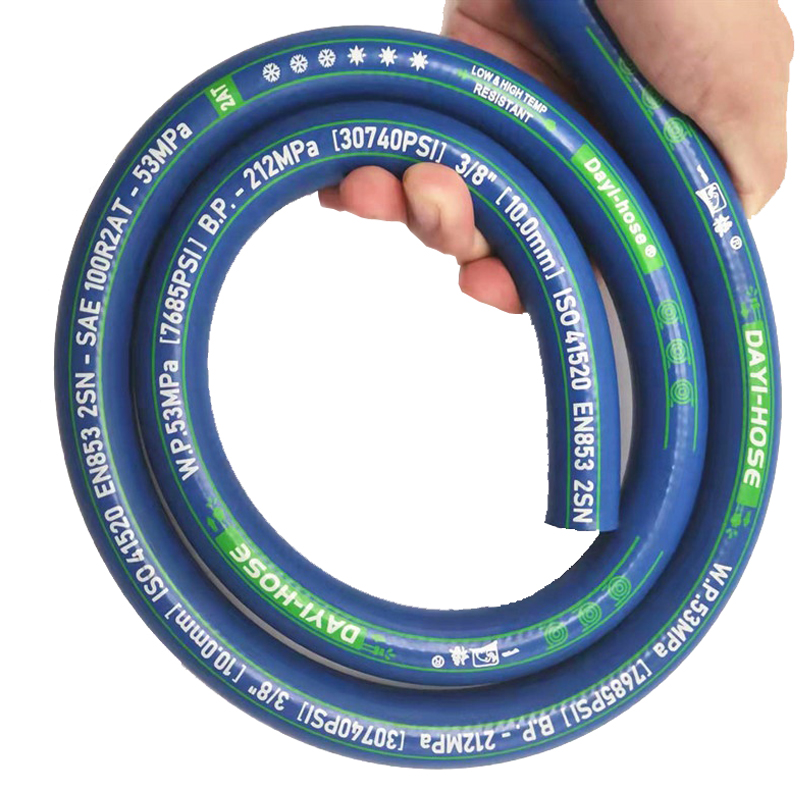335345435
Th12 . 09, 2024 23:06 Back to list
High-Pressure Rubber Hose Solutions for Durable and Flexible Applications
Understanding Pressure Rubber Hoses Applications, Benefits, and Maintenance
Rubber hoses are essential components in various industrial and commercial applications, functioning primarily to transport fluids or gases. Among the most utilized types of rubber hoses are those rated for high-pressure applications. Pressure rubber hoses are designed to withstand significant internal pressure while maintaining flexibility, durability, and performance. This article will explore the characteristics, uses, and maintenance of pressure rubber hoses.
Characteristics of Pressure Rubber Hoses
The construction of pressure rubber hoses is crucial to their performance. Typically, they are made from synthetic rubber compounds that provide resistance to heat, oil, and abrasion. The inner layer of these hoses is smooth to facilitate fluid flow and reduce turbulence, which helps optimize the hose's efficiency. The outer layer is often reinforced with layers of fabric or steel wire, enhancing strength and preventing rupture under high-pressure conditions.
Pressure ratings can vary based on the hose design and intended use. Most pressure rubber hoses are engineered to handle pressures ranging from several hundred to several thousand psi (pounds per square inch). This capability makes them suitable for diverse applications, from hydraulic systems to pneumatic tools.
Applications
The versatility of pressure rubber hoses means they find extensive use in various sectors, including
1. Automotive Industry Pressure rubber hoses are used in vehicles for delivering fuel, coolant, oil, and air. They play a crucial role in ensuring the proper operation of engines and other systems.
2. Hydraulic Systems In industrial machinery, pressure rubber hoses are vital for transmitting hydraulic fluid. They enable the operation of heavy equipment, such as forklifts, excavators, and hydraulic presses.
3. Construction In construction sites, these hoses are utilized for concrete pumping, transferring water, and in pneumatic tools, ensuring the efficient functioning of operations.
4. Agriculture Farmers rely on pressure rubber hoses for irrigation and chemical spraying. Their flexibility allows for easy maneuvering around fields, facilitating efficient agricultural processes.
5. Marine Applications Watercraft often use pressure rubber hoses for fuel lines, cooling systems, and other critical applications. Their resistance to saltwater and other harsh conditions makes them suitable for marine environments.
Benefits of Pressure Rubber Hoses
pressure rubber hose

The advantages of pressure rubber hoses are numerous. First, their flexibility allows them to be routed in various configurations, making installation easier in tight spaces. This characteristic also helps absorb vibrations, reducing wear and tear on connected equipment.
Second, pressure rubber hoses are lightweight compared to their metal counterparts, providing ease of handling without sacrificing performance. This feature is especially beneficial in mobile applications, where weight savings can significantly impact overall efficiency.
Third, the durability of these hoses makes them a cost-effective choice. They are designed to handle wear and tear, resulting in a longer service life and reduced replacement frequency, ultimately leading to savings in maintenance and downtime.
Maintenance of Pressure Rubber Hoses
To ensure longevity and optimal performance of pressure rubber hoses, regular maintenance is essential. Here are some maintenance tips
1. Inspection Regularly inspect hoses for signs of wear, cracking, or abrasions. Any damage can compromise the hose's integrity, increasing the risk of failure.
2. Cleaning Keep hoses clean and free from debris. Dirt and grime can lead to premature wear and may obstruct fluid flow.
3. Storage Store hoses in a cool, dry place away from direct sunlight and extreme temperatures. UV exposure can deteriorate rubber over time.
4. Correct Usage Always use hoses according to their specified pressure ratings. Avoid exceeding these ratings to prevent bursts or leaks.
5. Regular Replacement Even with proper maintenance, rubber hoses will eventually wear out. Implement a regular replacement schedule based on usage and environmental factors.
Conclusion
Pressure rubber hoses are vital components in numerous industries, offering flexibility, durability, and efficiency in fluid and gas transport. Understanding their characteristics, applications, and maintenance requirements can help users maximize the benefits of these indispensable tools. By adhering to best practices, businesses can ensure that their pressure rubber hoses perform optimally, ultimately leading to enhanced productivity and safety in their operations.
-
SAE 100 R17 Black Smooth Cover Hydraulic Hose
NewsMar.07,2025
-
SAE 100 R17 Black Smooth Cover Hydraulic Hose
NewsMar.07,2025
-
SAE 100 R17 Black Smooth Cover Hydraulic Hose
NewsMar.07,2025
-
SAE 100 R17 Black Smooth Cover Hydraulic Hose
NewsMar.07,2025
-
SAE 100 R17 Black Smooth Cover Hydraulic Hose
NewsMar.07,2025
-
steel wire braided hydraulic hose
NewsMar.07,2025



